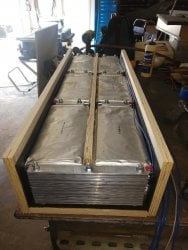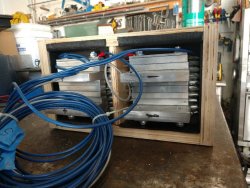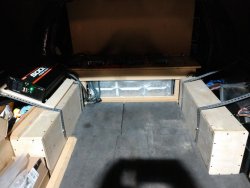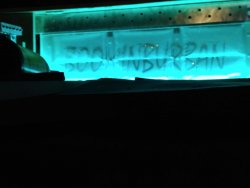the cells you are running hISPLS would not do a 14.4v charge?
All LTO cells suffer from the low voltage limitation so you're sitting at an oddball voltage. Cells are nominal 2.3V max charge 2.7 so your options are NEVER go above 14.4V charging (and have much of your usable power happening <13V) with 5S or you go 6s and either charge at 15.5 or leave a bit on the table there never fully charging them. Most factory charging systems will put out 14.8 at least occasionally so you'd want to externally regulate to be safe if you're going 5P, of course if you're going to externally regulate why not do 6s or even 7s, pulling off a terminal at 5s for anything that won't like >15V
120ah should be able to sustain my system of 300-500 amp discharge for around 5mins at a time since they are technically discharging and charging rapidly.
Bear in mind you're playing with the car running so 80A or whatever the alt can spare is always being used first then dipping into reserve. Depending on your music the average power used over time is quite a bit less. "Fast" charging depends on being able to dump a ton of current into the cells. 80A charge current would still take an hour to charge 80AH (assuming no losses).
The SOC I thought when they are charged would be what they say they are rated on the cells voltage (ex. 3.5 volt cell @100% SOC would be 3.5volts)
There's minimum, maximum and nominal charge ratings on each. Nominal being the average of where 80% of your usable power is coming from.... ideally you do not want to charge at maximum especially without some very precise management system; consider just a hair over max and you start prematurely chipping away at life expectancy.
In that case could we (I) run a 120ah for a few yrs without a bms system and be okay and everything work fine.
That's my plan. Yes, one cell going tits up would wreck the rest of the bank pretty fast, as far as all the tests have shown there isn't any catastrophic (read fire or explosion) type failure possible with LTO cells. Consider also 50% of my cost into this is hardware, so if I had to buy all new cells I don't need to buy bolts, washers, or copper again.
So if I hooked these up just like hooking another battery up in my system couldn't I just hook up a resister like installing a capacitor for the first time?
Why? You'd be yanking out any lead battery anyway (they'd always be fighting each other) and your alternator could only possibly deliver 1C. If you had quad HO alternators you might need to worry, but as it stands you could charge 120AH LTO bank with 1000A in @ 5 minutes and they'd be fine. The electric busses in China use small-ish banks and recharge as passengers load and unload at each stop.
As you were mentioning in the 15.5v range (not worried about that as my amps can handle that) but wouldn't that possibly back feed into battery and even alternator and destroy it all?
So there's the rub. Who knows if the ECU on your car smokes at 15.4V? IF some other bit in the car will react poorly? I'd assume there's enough wiggle room from the factory that things can survive. I've had issues with my regulator before and had 20V charging for a minute, under the hood battery was boiling but apart from the lights looking extra bright nothing seemed to go haywire. But I'd hate to say "oh yeah, run your car at 15.5V and you'll be cool" then you smoke some hidden computer.
Anyway, options are 6s and leave some on the table (charging with stock charging system), or externally regulate. If you're externally regulating best to confirm that won't hurt any of the car's electronics. I'd expect just about any alternator could charge 15.5 without trouble.










